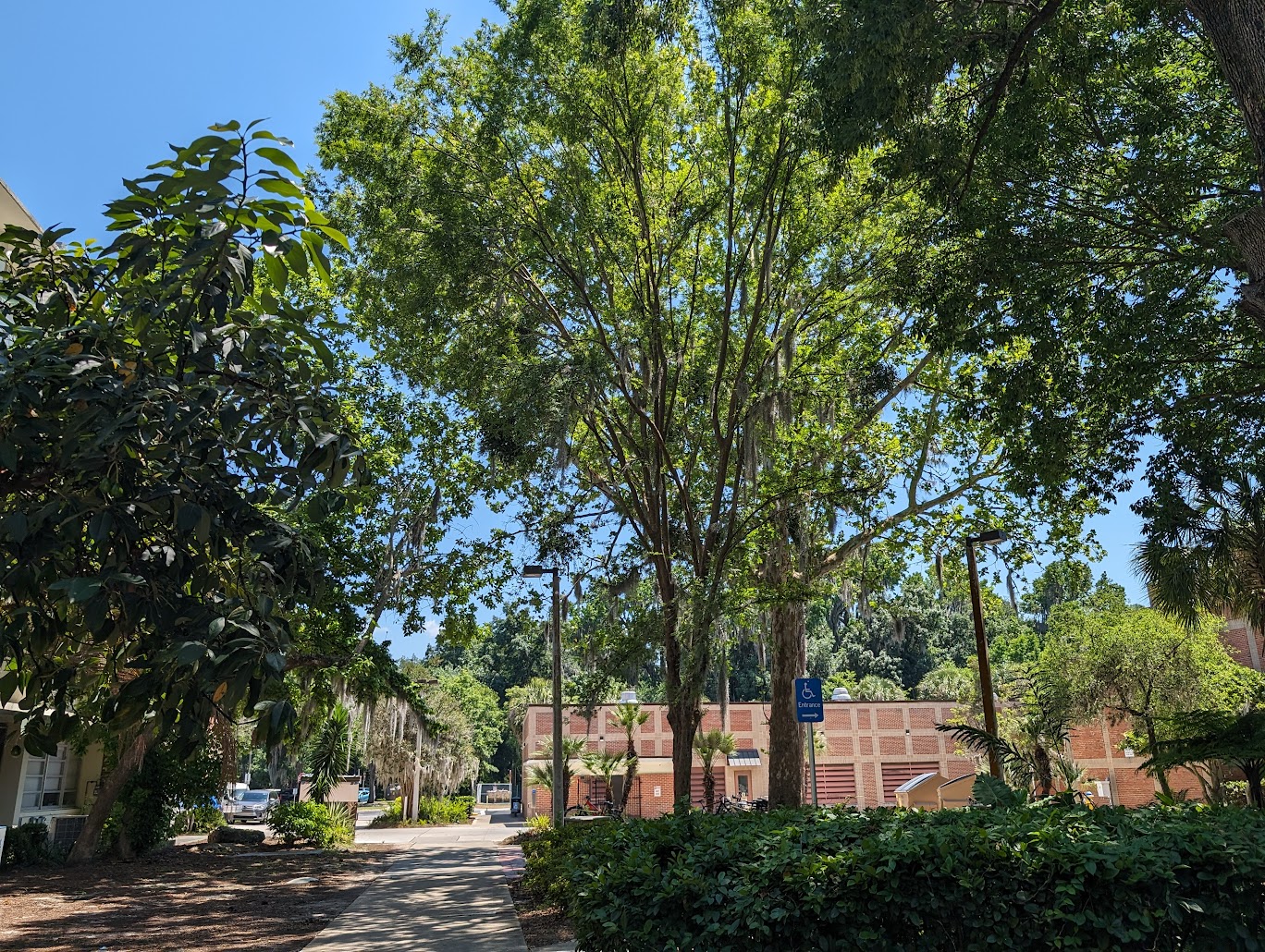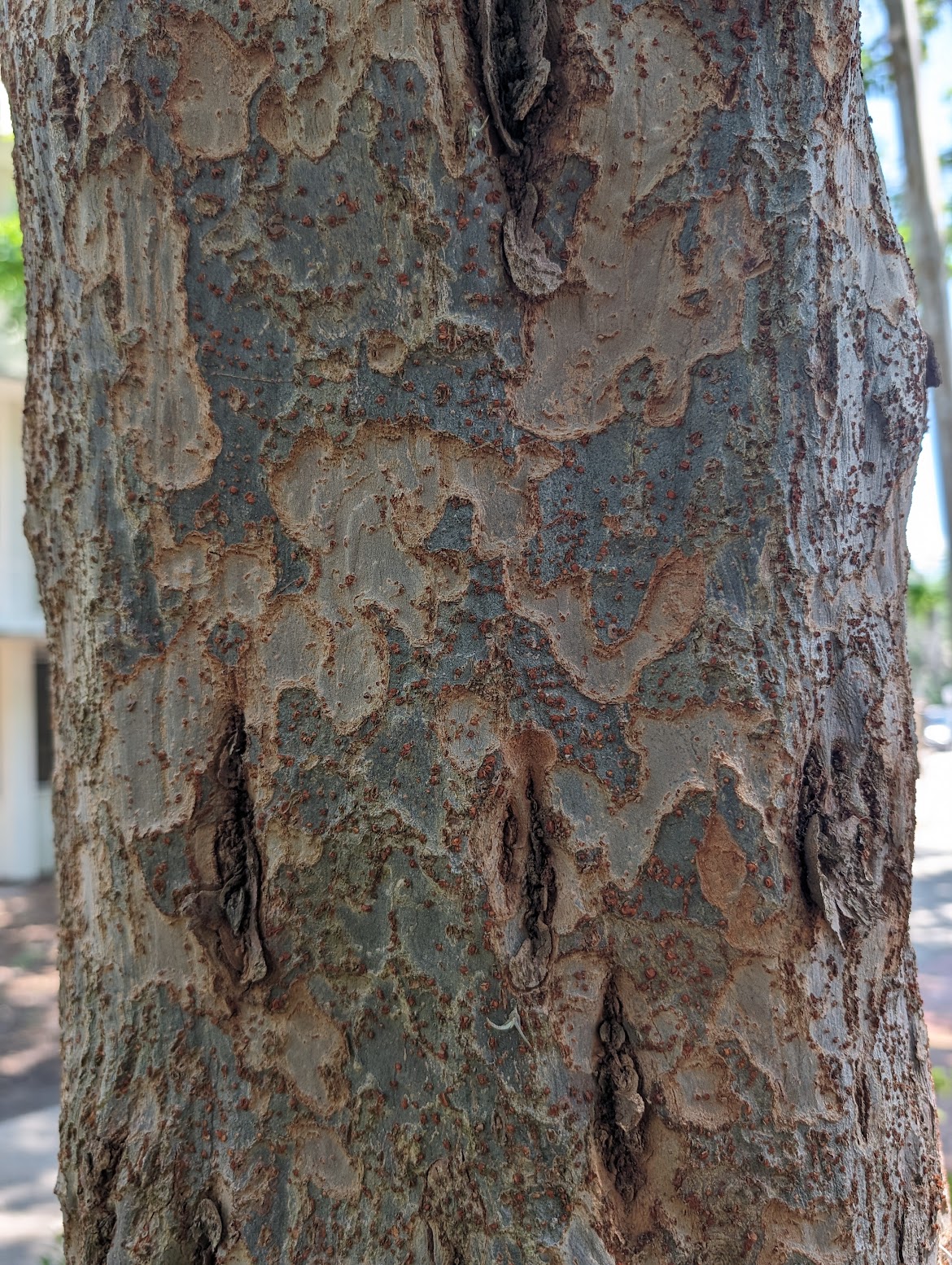Ulmaceae – Elm Family
In 2024, this Chinese elm measured 48 feet tall and had a diameter of 21 inches. Based on USDA Forest Service models, it will absorb approximately 2,901 lbs. of carbon over the next 20 years. Put simply, this tree alone will offset up to 11,738 car miles worth of carbon dioxide.
See all species on our Campus Tree Tour.
Introduction
The Chinese elm is well known throughout the United States for its distinctive appearance. This sturdy tree originated from east Asia, and upon its introduction to the U.S., it quickly became popular due to its disease resistance. The Chinese elm is commonly planted as an urban tree since its bark has a mottled, lace-like appearance that gives the elm decorative value.
Physical Description
Life expectancy: Up to 50-100 years
Height: 40 – 50 feet
Crown: 35 – 50 feet
Diameter: Up to 40 inches
Bark: Smooth with olive green, brown, and tan mottled flaking plates creating a lace-like look
Leaves: Deciduous, simple, and alternately arranged on the twig. The shape is elliptic (oval) with serrate margins. The top of the leaves is dark green with a paler green underside.
Flowers: Light green flowers that emerge in clusters near axillary buds at the base of leaves during late spring.
Fruits: Reddish-brown, flat, and papery samara with a single wing that encircles the seed. It fruits during the fall.
Key Identification Characteristics: lacy bark, leaf serrations, found in urban settings
Past and Present Uses
The Chinese elm originated from China, Korea, and Japan. It was used as a food source where the fruits were consumed, and its inner bark was ground into a powder to thicken soups. During the mid-1800’s, the tree was first introduced into the United States. Their resistance to the Dutch Elm Disease, which was rapidly infecting American elms, made them an ideal replacement as an urban tree.
Currently, the Chinese elm is planted along avenues as a shade tree within urban areas. Its fast growth rate, adaptability to urban air and soils, and resistance to disease has made it a popular ornamental. These trees are often grown in cultivars and in some cases, the Chinese elm has been hybridized with American elm to develop a resistance to the Dutch Elm Disease.
Ecological Importance
Origin: Native to the China, Korea, and Japan
Non-Native Range: Found scattered throughout the United States from Maine, north to Ontario, south to Florida, and west to California.

Figure 1. Nonnative range of Chinese Elm. Photo credit: UF/IFAS
In some states, the Chinese Elm has grown outside of urban settings, becoming invasive in North Carolina, New Jersey, Virginia, Wisconsin, and Nebraska. Yet, in other states, like Florida, the elm is not considered invasive. The elm prefers well-drained soils, but its adaptability to different soil types, pH levels, heat, and drought allows it to survive in various environments. These attributes combined with a fast growth rate create the potential for this tree to be invasive in natural environments.
More Information
https://edis.ifas.ufl.edu/publication/ST652
References
Figart, L. (n.d.). Chinese Elm. https://sfyl.ifas.ufl.edu/media/sfylifasufledu/duval/horticulture/urban-forestry/Chinese-Elm.pdf
Iowa Department of Natural Resources. (n.d.). Chinese elm, Ulmus parvifolia. https://www.iowadnr.gov/portals/idnr/uploads/forestry/chineseelm.pdf
Moore, L. M., & King, K. (n.d.). Chinese Elm. Plant Guide. USDA, NRCS. https://plants.usda.gov/DocumentLibrary/plantguide/pdf/pg_ulpa.pdf
Oregon State University. (n.d.). Ulmus parvifolia. Landscape Plants. https://landscapeplants.oregonstate.edu/plants/ulmus-parvifolia
Ulmus parvifolia. North Carolina Extension Gardener Plant Toolbox. (n.d.). https://plants.ces.ncsu.edu/plants/ulmus-parvifolia/
Ulmus parvifolia Jacq. USDA Plants Database. (n.d.). https://plants.usda.gov/home/plantProfile?symbol=ULPA



